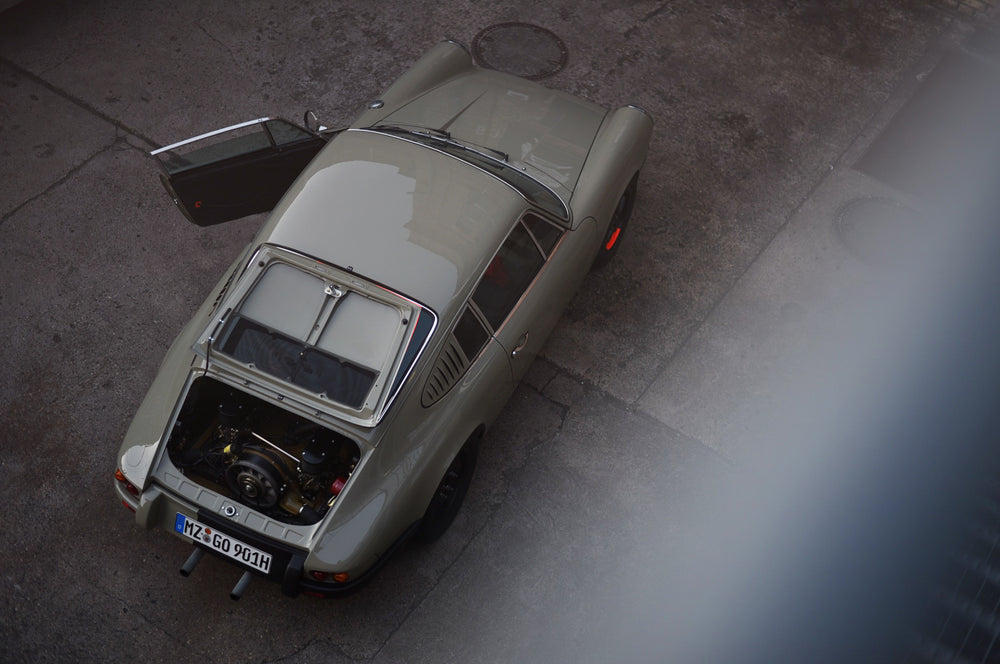The first 9 months…
Since my Project-Porsche was completed last September I’ve put more than 6,000km on the car; a lot of distance to cover in a short time in an old machine, and considering the car was in workshop-hibernation from October to April to fix a few things and keep the salt and snow away, you can probably tell that I like to drive the 911 whenever possible.






We often see the end results of restorations resto-mods in magazine spreads and on the endless pages of the internet, but there’s hardly any follow-up. Rarely do you hear about what happens after the long hours of wet sanding and wrenching have been tallied up. This won’t be the most in-depth saga of custom Porsche ownership, but I hope it sheds some light on what it’s really like to drive a car like this after the “big reveal,” so to speak.





You might remember seeing my car on the site last year when it was first completed, and also my Swiss mountain road trip I took with my girlfriend, but here’s what’s happened since. First, a few mechanical little issues. The rev counter would get stuck sometimes, and had to be sent back to the mechanic to sort out. A few hose clamps had to be replaced in the bay, and a small crack in one of the door sills had to be repaired—the correct way!—and repainted. The short shifter needed to be adjusted as well, as the barrier between reverse and first gear was too weak (and unfortunately, still is). These are minor bumps though.
The biggest issue we faced was that the engine wasn’t really revving as high as it should, or when we did manage to get the RPM towards the top it would break up and not be nearly as smooth as it should have been. That was solved by adjusting the carburetors to jet properly throughout the rev range, and now it pulls tot the top like a good Porsche flat-six should!



After the carb tuning, we put the engine on the test bench to take an accurate power measurement (necessary for correct registration in the vehicle registration papers). Now I can say that it officially produces 180hp, and the power curve lives up to the name—no more disappointing drop-off at the top.
That wasn’t the end of the issues though, and while I am walking through all the problems I had with the “completed” build, I really am not complaining. It has been a wonderful experience throughout, and tuning and adjusting the last pieces of this multi-year puzzle is rewarding in its own right—remember, this car started life as a donor shell.




So, back to the minor headaches; several times I had problems with the clutch cable, which had to be readjusted a few times before it finally ripped completely apart during a classic car rally, AKA great timing! The car and I finished that event, albeit on a trailer. The new cable will hopefully last longer, or at least snap closer to my garage…





All the little things can’t compare to the joys I’ve had in this car already, and the adventures in it still to come. Until then, I can say three things:
1. The car drives fantastically.
2. The bright graphic on the hood in conjunction with the stone-gray paint looks exactly as I’d hoped it would when I first sketched the design on paper, and it’s damn fun to photograph.
3: The people's comments about the project are almost entirely positive, which isn’t the reason to build it of course, but still, a nice consequence. Who doesn’t like having their car complimented?

Last weekend I was at the biggest Porsche meeting in southern Germany. Almost 1,000 vehicles had arrived, and I had a chance to show and explain my project to many like-minded P-Car fans. As soon as I stopped to park, the first spectators surrounded me to look. And when you open the hood, it’s fun to listen to the murmurs going through the crowd. Ooh and ahh are followed by more concrete questions: What carburetors do you have? What’s the model-year, the wheel size, why Minilites on the back, why the orange sticker, why are the rubber-joints on the windscreen 5mm wider that the originals from the period? People are very curious to know all kinds of details, and many of them know much more about it than I do! At least about the technical aspects of the engine.

I realized also that many people already knew the car from some publications in magazines or websites over the last months. So they were happy to see the car in person and to meet me. One guy even wanted to take a photo with me! Most people really like the car, and this makes me almost as happy as driving it. They perceive the build as a very harmonious, well-thought-out project which looks coherent with all the elements and details. They tell me it’s pretty original, in a sea of modded 911s that start to blend in to each other. And that’s exactly what I wanted to achieve. A car, which is different, but looks like it was meant to be.


The photos you see here I took last week at the old train-coach factory in Mainz-Mombach, DE. The “Alte Waggonfabrik” was founded in 1845. The present-day historic yellow buildings with red brickwork were built between 1896 and 1910, and after their destruction in the Second World War, the Phoenix Hall was the first hall to be rebuilt. The area of the wagon factory then served as a special vehicle plant (West Wagon), a bus plant for Magirus-Deutz and Iveco, and finally after the abandonment of the Mainz plant by Iveco in 1994, today we find various business, artist spaces, and a dance school tucked away.
























































